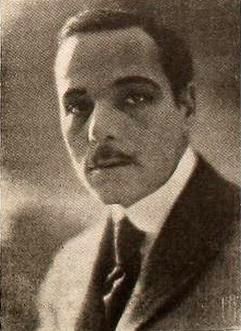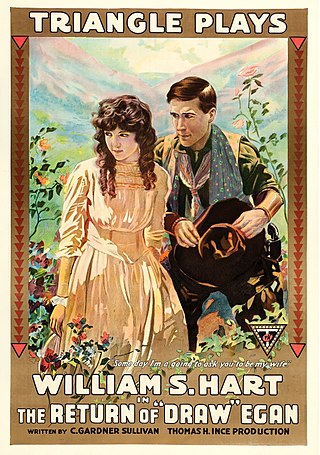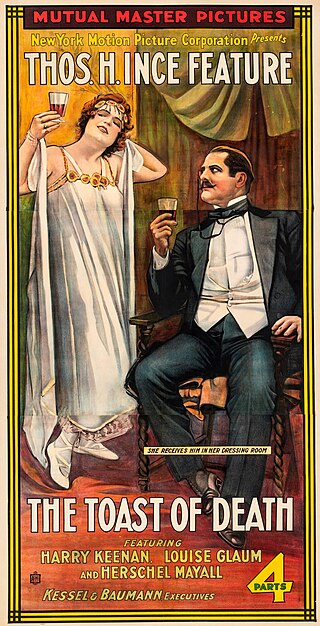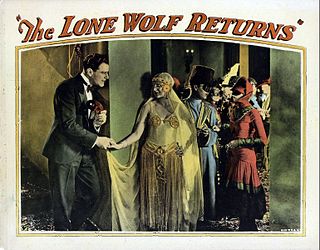
Louise Glaum was an American actress. Known for her roles as a vamp in silent era motion picture dramas, she was credited in her early career with giving one of the best characterizations in such parts.

Bertram Lytell was an American actor in theater and film during the silent film era and early talkies. He starred in romantic, melodrama, and adventure films.

The Lone Wolf is the nickname of the fictional character Michael Lanyard, a jewel thief turned private detective in a series of novels written by Louis Joseph Vance (1879–1933). Many films based on and inspired by the books have been made. The character also appeared briefly on radio and television.

Bertram Grassby was an English actor. He appeared in more than 90 silent era films between 1914 and 1927. Grassby was married to American actress Gerard Alexander. He was born in Lincolnshire, England and died in Scottsdale, Arizona.

Sex is a 1920 American silent drama film directed by Fred Niblo, written by C. Gardner Sullivan, produced by J. Parker Read, and starring Louise Glaum. On its surface, the film was a morality story on the evils of marital infidelity. However, the film's producer, J. Parker Read, had made a series of pictures on sex themes. The release of Sex, with its provocative title and explicit scenes of seduction and debauchery, made it the subject of controversy among censors and commentators.

The False Faces is a 1919 American silent action film written and directed by Irvin Willat, based on the novel by Louis Joseph Vance, and starring Henry B. Walthall as Michael Lanyard, the "Lone Wolf," and Lon Chaney as Karl Ekstrom, the villain. A complete print of the film survives at the George Eastman House and at the Turner Film Library. It was thought to be lost for years, but was later found and somewhat restored. Director Willat was originally to have shared co-directing chores with Jerome Storm, but when the film's production was moved back from August to October, he ended up being the sole director.

The Return of Draw Egan is a 1916 American silent Western film starring William S. Hart, Louise Glaum, Margery Wilson, Robert McKim, and J.P. Lockney.

Sahara is a 1919 American dramatic film written by C. Gardner Sullivan and directed by Arthur Rosson. The film starred Louise Glaum and told a story of love and betrayal in the Egyptian desert.

The Toast of Death is a 1915 silent era drama/romance motion picture released by Mutual Film Corporation starring Louise Glaum, Harry Keenan, and Herschel Mayall.

The Leopard Woman is a 1920 American silent adventure romance drama film starring Louise Glaum, House Peters, and Noble Johnson. Directed by Wesley Ruggles and produced by J. Parker Read, Jr., the screenplay was adapted by H. Tipton Steck and Stanley C. Morse based on the novel The Leopard Woman (1916) by Stewart Edward White.

The Goddess of Lost Lake is a 1918 American silent era drama film starring Louise Glaum, Lawson Butt, and Hayward Mack.

Golden Rule Kate is a 1917 American silent Western film starring Louise Glaum, William Conklin, Jack Richardson, Mildred Harris, and John Gilbert. It was directed by Reginald Barker from a story written by Monte M. Katterjohn and produced and distributed by the Triangle Film Corporation.

The Lone Wolf in London is a 1947 American mystery crime film directed by Leslie Goodwins and starring Gerald Mohr, Nancy Saunders and Eric Blore. The picture features the fictional Scotland Yard detective the Lone Wolf who travels to London, and solves the mystery of some missing jewels. It was the penultimate Lone Wolf film, followed by The Lone Wolf and His Lady in 1949, and the last for Mohr in the lead role.

The Lone Wolf in Mexico is a 1947 American black-and-white mystery-adventure film directed by D. Ross Lederman for Columbia Pictures. It features Gerald Mohr as the title character, detective Lone Wolf. Chronologically the third-to-last Lone Wolf film in Columbia's theatrical series, it was followed by The Lone Wolf in London later in 1947 and The Lone Wolf and His Lady in 1949.

One Dangerous Night (1943) is the tenth Lone Wolf film produced by Columbia Pictures. It features Warren William in his seventh and second-to-last performance as the protagonist jewel thief turned detective Lone Wolf, and Warren Ashe as Sidney Shaw, the film's antagonist. The film was directed by Michael Gordon and written by Arnold Phillips, Max Nosseck, and Donald Davis.

The Lone Wolf is a 1917 American silent drama film based on the 1914 novel The Lone Wolf by Louis Joseph Vance. Starring Bert Lytell and Hazel Dawn, it was adapted for the screen by George Edwardes-Hall and produced and directed by Herbert Brenon. No prints of the film are known to survive, so it is currently classified as lost.

The Lone Wolf is a 1924 American silent mystery film written and directed by Stanner E. V. Taylor based on a story by Louis Joseph Vance. This marked the final film of star Dorothy Dalton.

The Lone Wolf Returns is a 1926 American silent mystery film directed by Ralph Ince and starring Bert Lytell, Billie Dove, and Freeman Wood.

The Lone Wolf's Daughter is a lost 1929 feature part-talkie sound film. While the film had a few sequences with audible dialog, the majority of the film featured a synchronized musical score with sound effects using both the sound-on-disc and sound-on-film process. It was directed by Albert S. Rogell and stars Bert Lytell. It was produced and distributed by Columbia Pictures.

Rasputin, the Black Monk is a lost 1917 American silent drama film directed by Arthur Ashley and starring Montagu Love. It was produced and distributed by World Film Company.




















